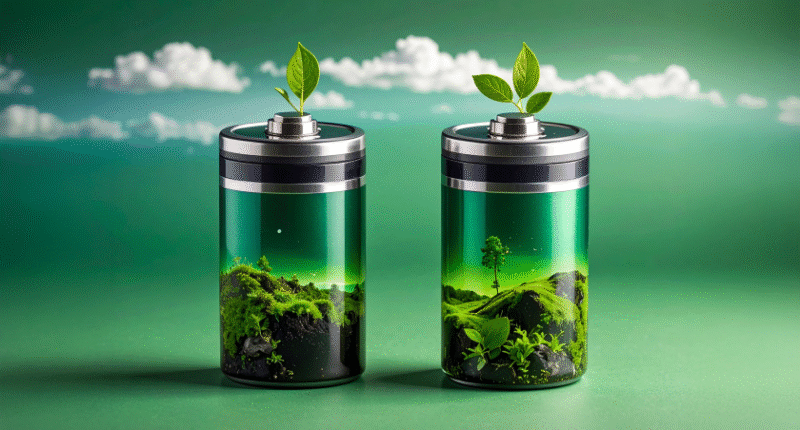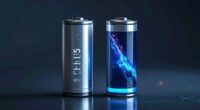The demand for efficient, safe, and durable energy storage has never been higher. From electric vehicles (EVs) to renewable energy systems, the type of battery we use plays a critical role in performance, sustainability, and cost-effectiveness. Two major contenders in the energy storage race are LiFePO4 (Lithium Iron Phosphate) batteries and solid-state batteries.
Both offer unique benefits and challenges, making it essential to understand how they compare in terms of lifespan, performance, and future applications.
What is a LiFePO4 Battery?
LiFePO4 (Lithium Iron Phosphate) is a type of lithium-ion battery known for its safety, stability, and long lifespan. Unlike traditional lithium-ion batteries that use cobalt-based cathodes, LiFePO4 uses iron phosphate, making it more eco-friendly and thermally stable.
Key Features of LiFePO4
-
Lifespan: Up to 4,000–6,000 charge cycles
-
Safety: Lower risk of thermal runaway or fire
-
Voltage Stability: Provides steady power delivery
-
Applications: Widely used in solar storage, RVs, e-bikes, and some EVs
What is a Solid-State Battery?
Solid-state batteries replace the liquid or gel electrolyte found in lithium-ion batteries with a solid electrolyte. This design reduces risks of leakage, overheating, and degradation.
Key Features of Solid-State Batteries
-
Energy Density: Higher than LiFePO4, meaning more energy stored in smaller size
-
Safety: Improved safety due to solid electrolyte
-
Lifespan: Projected to last over 10,000 cycles in future designs
-
Applications: Expected to dominate electric vehicles and high-performance electronics once commercially scalable
Lifespan: Which Lasts Longer?
LiFePO4 Lifespan
-
Typically lasts 10–15 years depending on usage
-
Around 4,000–6,000 cycles with proper maintenance
-
Known for consistent capacity retention
Solid-State Lifespan
-
Theoretical lifespan could exceed 10,000 cycles
-
Since they are still in development, real-world data is limited
-
Potentially outperform LiFePO4 in long-term durability
👉 Winner (Current Market): LiFePO4
👉 Winner (Future Potential): Solid-State
Performance: Power, Efficiency, and Safety
Energy Density
-
LiFePO4: 90–160 Wh/kg
-
Solid-State: 250–500 Wh/kg (future models may exceed this)
-
Result: Solid-state batteries can store more energy in less space, making them ideal for EVs.
Charging Speed
-
LiFePO4: Moderate charging times (30 minutes to several hours depending on system)
-
Solid-State: Expected to enable faster charging due to improved conductivity
Safety and Stability
-
LiFePO4: Very safe; resistant to overheating and fire risks
-
Solid-State: Even safer; no liquid electrolyte to leak or combust
-
Result: Both score high in safety, but solid-state has a slight edge.
Cost: Affordability and Scalability
LiFePO4
-
Already mass-produced, making it relatively affordable
-
Prices have dropped significantly in recent years
-
Great for solar, home storage, and mid-range EVs
Solid-State
-
Currently very expensive to manufacture
-
Large-scale production not yet feasible in 2025
-
Costs expected to drop as companies like Toyota, Samsung, and QuantumScape advance the technology
👉 Winner (2025 Market): LiFePO4 for affordability
👉 Winner (Long-Term): Solid-State once manufacturing scales
Applications in 2025
LiFePO4 in 2025
-
Solar Energy Storage: Reliable choice for off-grid and grid-tied homes
-
Electric Vehicles: Used in budget-friendly EVs (e.g., Tesla’s base models in China, BYD cars)
-
Marine & RVs: Long lifespan and safety make it ideal for mobile power solutions
Solid-State in 2025
-
Still in development phase for commercial EVs
-
Used in prototypes and limited-run vehicles
-
Expected to revolutionize EV range and charging times once available at scale
Future Trends: LiFePO4 vs Solid-State
LiFePO4 Future Outlook
-
Production costs will continue to decrease
-
Widely adopted in residential, industrial, and transportation markets
-
Likely to remain a dominant choice for affordable, safe storage in the next decade
Solid-State Future Outlook
-
Mass adoption expected by 2030 in electric vehicles
-
Could replace current lithium-ion technology for high-performance devices
-
Potential to deliver faster charging, longer range, and superior durability
Pros and Cons: Side-by-Side Comparison
| Feature | LiFePO4 Battery | Solid-State Battery |
|---|---|---|
| Lifespan | 4,000–6,000 cycles | 8,000–10,000+ cycles (future) |
| Energy Density | 90–160 Wh/kg | 250–500 Wh/kg |
| Charging Speed | Moderate | Faster (future potential) |
| Safety | Very safe | Extremely safe |
| Cost (2025) | Affordable, mass-produced | Expensive, limited supply |
| Best Use | Solar storage, budget EVs | Next-gen EVs, high-end devices |
Expert Predictions for 2025 and Beyond
-
LiFePO4 will dominate the renewable energy storage market due to its affordability and proven safety.
-
Solid-state will begin entering luxury EVs around 2025–2026, with Toyota and QuantumScape leading the way.
-
By 2030, solid-state could become mainstream, replacing traditional lithium-ion and competing directly with LiFePO4.
-
A hybrid market may emerge, where LiFePO4 is used for cost-effective storage while solid-state powers high-performance EVs and electronics.
Conclusion
The comparison between LiFePO4 and solid-state batteries highlights a classic case of present practicality versus future potential.
-
LiFePO4 batteries are the current champions of affordability, safety, and reliability, making them the best choice for solar storage, RVs, and affordable EVs in 2025.
-
Solid-state batteries represent the future of energy storage, promising longer lifespans, faster charging, and higher energy density — but they are not yet widely available or cost-effective.
In short: LiFePO4 is the battery for today, while solid-state is the battery of tomorrow.









